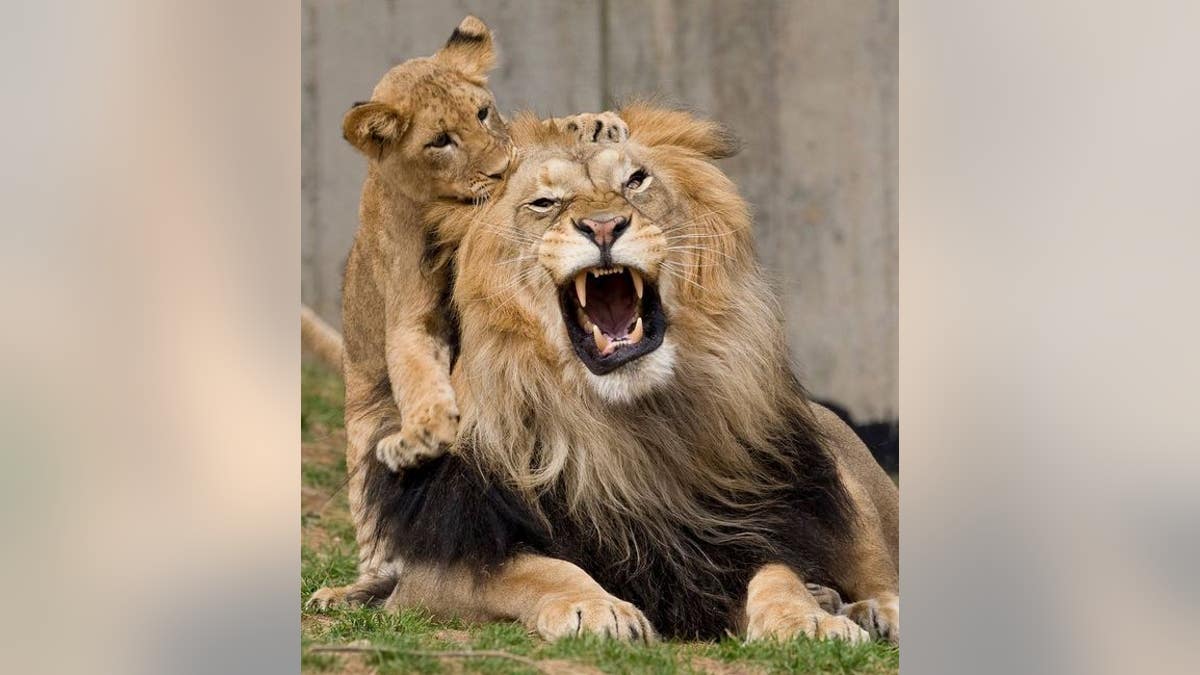
Fear of humans is now a key factor that drives lion behavior, studies find. (Smithsonian's National Zoo)
Human population growth and land development are encroaching on the savanna home of African lions, according to a new study, which finds only a quarter of original savannah land remains for lions to roam.
The study combined lion population data and human population density with a look at land use from Google Earth. The software allowed researchers to see areas that have been converted to farmland or villages that older maps showed as wilderness.
"These savannahs conjure up visions of vast open plains," study researcher Stuart Pimm of Duke University said in a statement. "The reality is that from an original area a third larger than the continental United States, only 25 percent remains."
Changing savannahs
The African lion (Panthera leo) is listed as vulnerable by the International Union for Conservation of Nature (IUCN). The agency reports that the population of African lions has dropped by 30 percent over the past two decades. The new study, published online this week in the journal Biodiversity and Conservation, reveals more bad news about the situation on the ground. [In Photos: A Lion's Life]
"Based on our fieldwork, we knew that most of the information out there from low-resolution satellite-based studies was wrong," study co-author and Duke University researcher Jason Riggio said in a statement. "Existing global maps are quite coarse and show large areas of African woodlands as being intact."
But Google Earth's ability to zoom in close showed that not to be the case, Riggio said. Of the 5.2 million square miles (13.5 million square kilometers) of savannah land in Africa, only 3.7 million square miles (9.7 million square km) have fewer than 25 people per square mile, meaning lions can roam freely. That's down from 4.6 million square miles (11.9 million square km) in 1960.
Lions are actually present on about 1.3 million square miles (3.4 million square kilometers) of savannah now, the researchers found.
"Only by utilizing very high-resolution imagery were we able to identify many of these areas as being riddled with small fields and extensive, if small, human settlements that make it impossible for lions to survive," he said.
Helping lions
The study suggests that lion numbers have dropped to between 32,000 and 35,000 in the wild (previous estimates ranged from 20,000 to 40,000). West African lions seem to be in the worst trouble, the researchers found, with population numbers dropping faster than in other regions.
A total of about 24,000 lions live in 10 "strongholds," protected areas with at least 500 lions where populations are stable or growing, the study found. None of these strongholds are in West Africa. Another 4,000 lions live in potential strongholds, and another 6,000 live in areas that are unlikely to remain wild for long.
"This research is a major step in helping prioritize funding strategies for saving big cats," study co-author Luke Dollar, the grants program director of National Geographic's Big Cats Initiative. "Of the estimated 32,000 to 35,000 lions, more than 5,000 of them are located in small, isolated populations, putting their survival in doubt. The research will help us better identify areas in which we can make a difference."
Follow Stephanie Pappas on Twitter @sipappas or LiveScience @livescience. We're also on Facebook & Google+.
Copyright 2012 LiveScience, a TechMediaNetwork company. All rights reserved. This material may not be published, broadcast, rewritten or redistributed.
